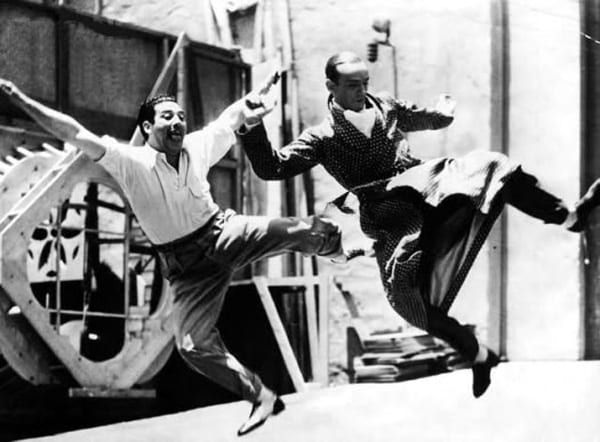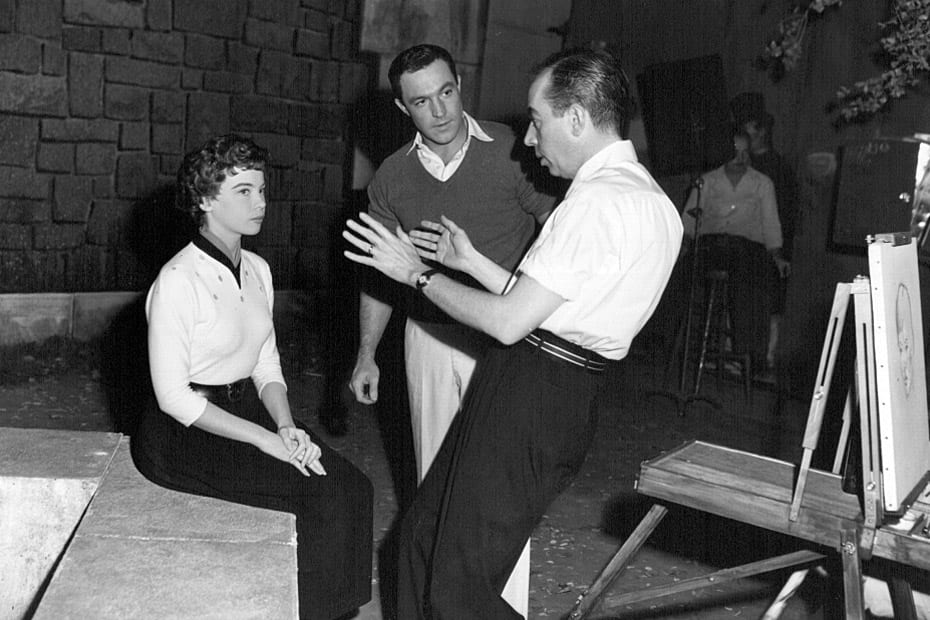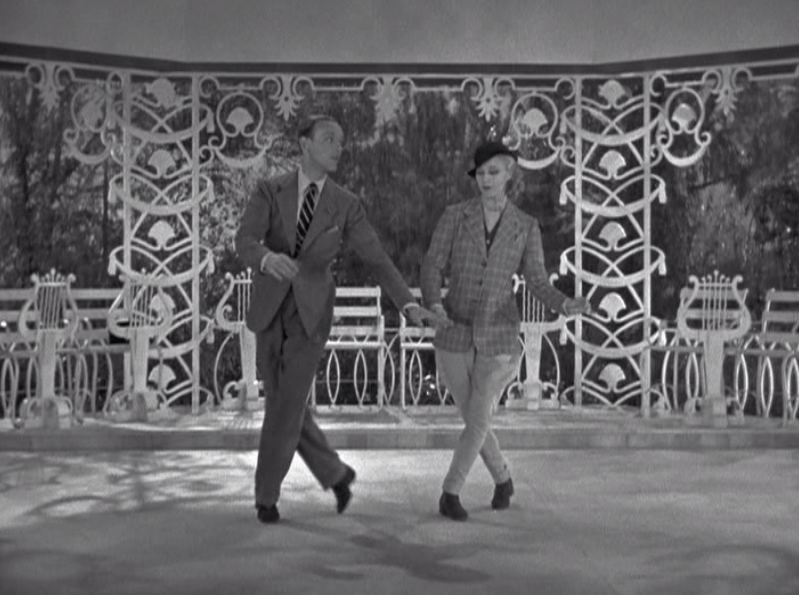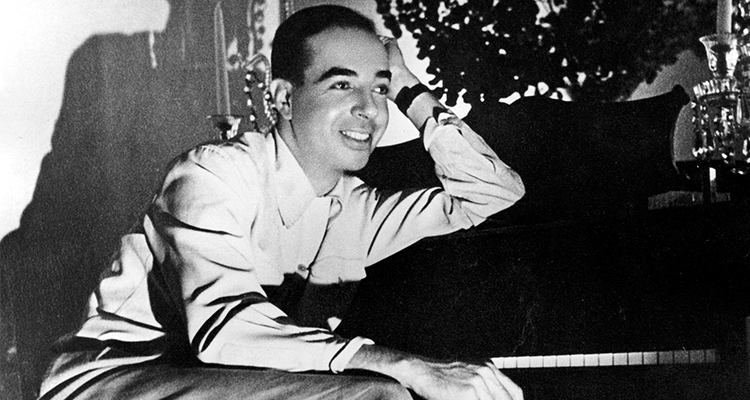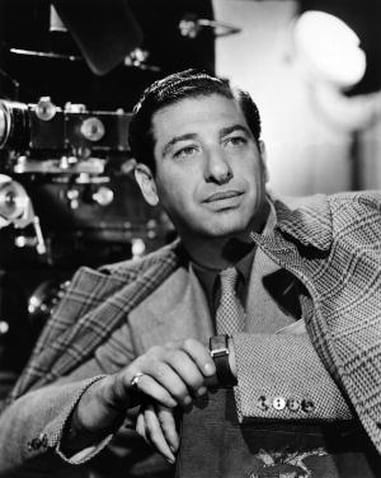Of all the debates about Old Hollywood, the Fred Astaire vs. Gene Kelly debate is one of the most popular. Movie fans enjoy comparing their dance styles and who they like better. They talk about how Astaire’s dancing was more elegant, and whether that makes it better than Kelly’s more athletic choreography. But what people don’t talk about as much is their directors.
Mark Sandrich directed five of the ten musicals starring Fred Astaire and Ginger Rogers. Sandrich uses a lot of tracking shots and zooms to fill his films, particularly Top Hat, with a lively energy. But at the same time, Sandrich knows exactly when to let the camera record Astaire’s dancing. Sandrich often composes his shots so that Astaire’s entire body is in frame as he dances. This enables the audience to see every aspect of his dancing and gives his musical numbers a more relaxed feel than if Sandrich simply shot close-ups of his feet. The relatively long length of these shots allows the audience to drink in every step of his dances. Sandrich’s technical sophistication helps make Astaire’s dancing seem as debonair and classy as the beautiful sets that surround him.
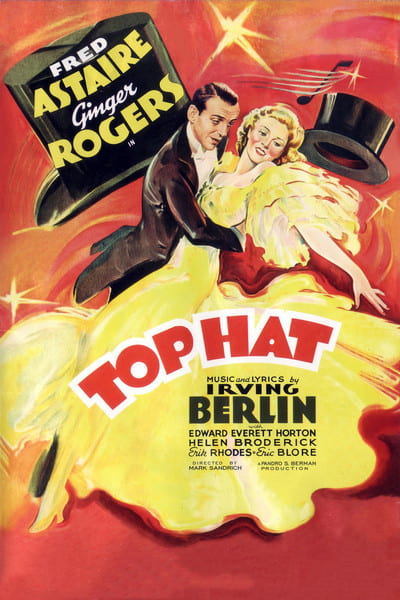
Gene Kelly, in contrast, never worked with Sandrich. His best working relationship with a director was probably his collaboration with Stanley Donen, but he worked very well with Vincente Minnelli. Minnelli directed Kelly in the intriguing oddity The Pirate and the classic An American in Paris, which won the Academy Award for Best Picture in 1952. People still recognize An American in Paris as one of the best of the Old Hollywood musicals. This is perhaps because it has such a good unity between its lead actor’s dancing style and its technical content.
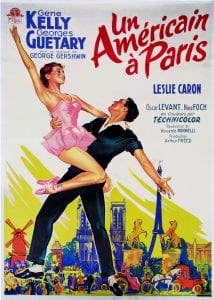
Minnelli frequently shows Kelly’s whole body when he dances, but he is more willing to use cuts than Sandrich. His camera movement doesn’t sweep you up in the effortlessness of his leading man’s dancing, but it is faster and makes you feel the effort that goes into his performance. It is a more robust and quick style of filmmaking than that of Sandrich.
A good contrast of their differing directorial approaches is noticeable when you look at “Isn’t This a Lovely Day (to be Caught in the Rain)?” from Top Hat and “I’ve Got Rhythm” from An American in Paris. Once Astaire starts singing, there are only five cuts in the entire number. The pace of the camera is stately and the shots are framed so we can see how Rogers’s character can match every move that Astaire’s character can make.
In contrast, “I’ve Got Rhythm” has eight cuts. Minnelli has more angles in his shots than Sandrich did and makes greater use of closer shots as Kelly’s character energetically dances to amuse some young children. His tracking shots move more from side to side as opposed from forward to back, which makes Kelly’s movements have a greater force.
What unites these two seemingly disparate musical numbers is their relationship of content to form. Both musical numbers reflect their leading man’s unique styles of dance. In addition, both musical numbers reflect the filmmaking styles of the directors who helped to create some of the best American musicals of the 20th century.
You can see Gene Kelly find love in the City of Lights today, October 9, when the IU Cinema screens Minnelli’s gorgeous An American in Paris as part of the series Monday Matinee Classics. Harriet Newman Leve, an IU alumna and the producer of the recent Broadway adaptation of An American in Paris, is scheduled to be present. This screening is also sponsored by the Department of Theatre, Drama, and Contemporary Dance and the IU Cinema.
On October 28, you can marvel at the magical teaming of Fred Astaire and Ginger Rogers in Sandrich’s brilliant Top Hat, which will close out this semester’s City Lights Film Series line-up.

Jesse Pasternack is a senior at Indiana University and the co-president of the Indiana Student Cinema Guild. He writes about film, television, and pop culture for the Indiana Daily Student. Jesse is a moderator at Michael Moore’s Traverse City Film Festival and a friend of the Doug Loves Movies podcast. He has directed five short films.
